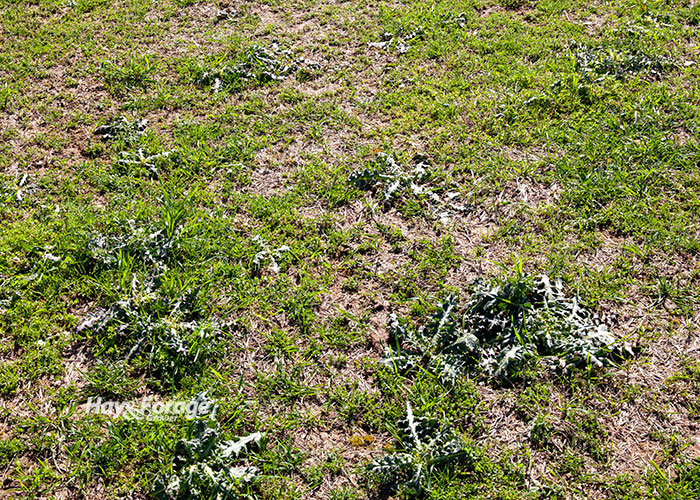Geesh . . . this pasture looks thin |
| By Mike Rankin, Managing Editor |
|
|
 Pasture productivity ebbs and flows from year-to-year and even within a growing season. That’s normal. What isn’t normal is when the productivity trendline continues in a downward spiral over a period of several years with few or no upticks. Generally speaking, if a pasture looks marginal in the spring, it will be way south of marginal by fall. Call it poor, if you will. Questions about depleted grass stands in the fall are common for Gary Bates, the University of Tennessee’s extension forage specialist and director of its Beef and Forage Center. “Total stand loss in a grass pasture or hayfield does not happen all at once,” Bates asserts. “Most of the time it occurs slowly, over the course of two or three years. Once it starts, however, it seems to snowball each year until finally the tall fescue or orchardgrass is completely gone.” Bates says it’s rare to attribute just one factor to total stand loss. Rather, it’s due to several negative factors occurring at the same time or sequentially. For example, if a pasture is overgrazed during a drought, a small amount of stand loss will occur. That may be followed by weed encroachment, resulting in more competition for the desirable species. If soil fertility is lacking, then over the course of two or three years, a good pasture transitions to bad . . . then worse. Topping Bates’ list of reasons he sees as causing pasture stand loss are: 1. Overgrazing or mowing too low. Bates explains that as leaf tissue is removed from a grass, the plant will need to use stored energy to produce regrowth. The lower the grazing or mowing height, the more energy that is required to be used and root regeneration is hindered. This problem is exacerbated in a pasture situation because plants might be eaten off several times, causing a depletion of the plant’s energy reserves. When grazing or mowing, the forage specialist suggests leaving a 3- to 4-inch stubble, which allows for a functional photosynthetic base. 2. Drought. Grasses like tall fescue and orchardgrass are cool-season grasses and are most productive during the spring and fall. In summer, their production suffers. They are not adapted to high temperatures, and their water-use efficiency isn’t great. Coupling a lack of rainfall with higher temperatures is especially problematic for these grasses, according to Bates. An extended drought can result in grass plant death. 3. Poor soil fertility. Readily available nutrients are needed for a plant to be able to survive and compete in a pasture or hayfield. If one or more nutrients are lacking, plant vigor will be reduced, which, like drought, may ultimately lead to plant death. Nitrogen, phosphorus, and potassium are the nutrients used in large quantities by plants, and a soil test is useful to determine fertilizer and lime requirements for a field. Since soil pH affects nutrient availability, liming to keep the pH above 6 helps ensure nutrients remain obtainable by the plant. 4. Weed pressure. Bates notes that there are certain weeds that have a specific growth pattern and can create severe competition issues in a grass field. Tall growing weeds like spiny pigweed and tall ironweed can shade out plants below their canopy, causing stand loss. The forage specialist says that they may not always be the reason for complete stand loss, but they can have a dramatic impact on the area immediately surrounding them. 5. Disease. There are not many fungal diseases that kill tall fescue and orchardgrass plants in pastures and hayfields, but there are a few that can cause plant stress. Coupled with the previously mentioned factors, diseases could contribute to additional stand loss. With few options for sprays to control grass diseases, managing to maintain a vigorous stand is an important component of limiting the impact of plant diseases. |
